
It feels funny to sit here typing this article in a tin helmet but I feel like some protection may be advisable as I set out to explain just how and why Fuji has overtaken Leica and replaced the red dot in so many gadget bags. I know Mike Evans will take issue with me but I feel I need to get this off my chest.
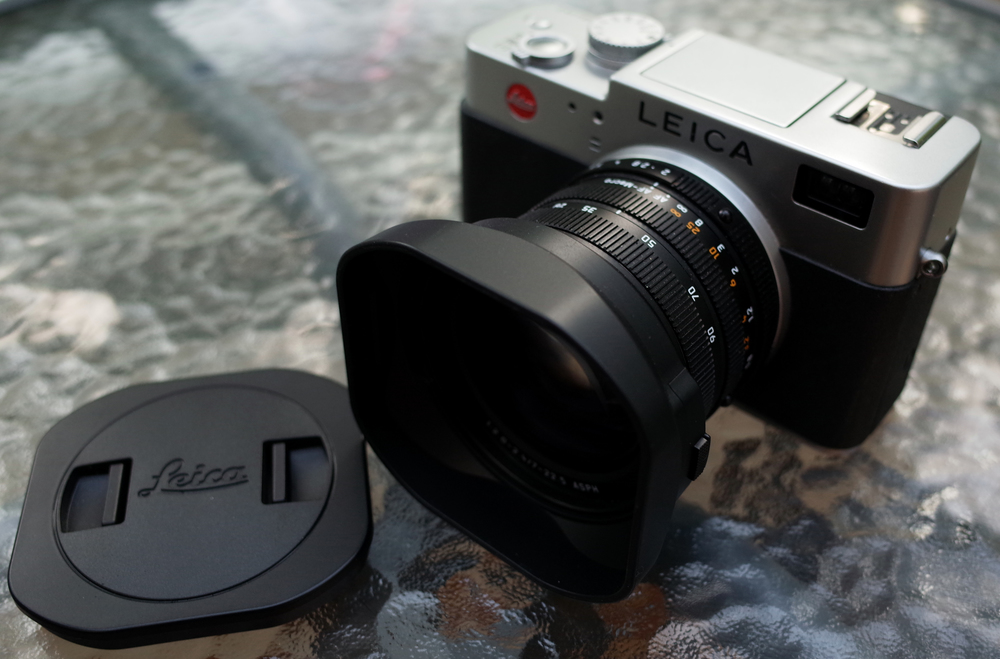
I have an extensive background in Leica use myself, having started with an M6 in the early ’90s then over the next 20-odd years delighting and frustrating myself in roughly equal measure with M2, M4, M6, M7, MP, R4, R7, IIIc and IID models as well as a CM, Digilux 2, LC-1 (the Panasonic equivalent) and a D-Lux 4.
Favourite
My all-time favourite and main camera for many years was the M7.85 pictured here wearing a lovely 50mm Canon f/1.2 lens. This camera accompanied me around the world for over a decade. I bought it new, one of the first few into the country (then had to drive to Milton Keynes to swop it for one that didn’t suffer from battery drain…)
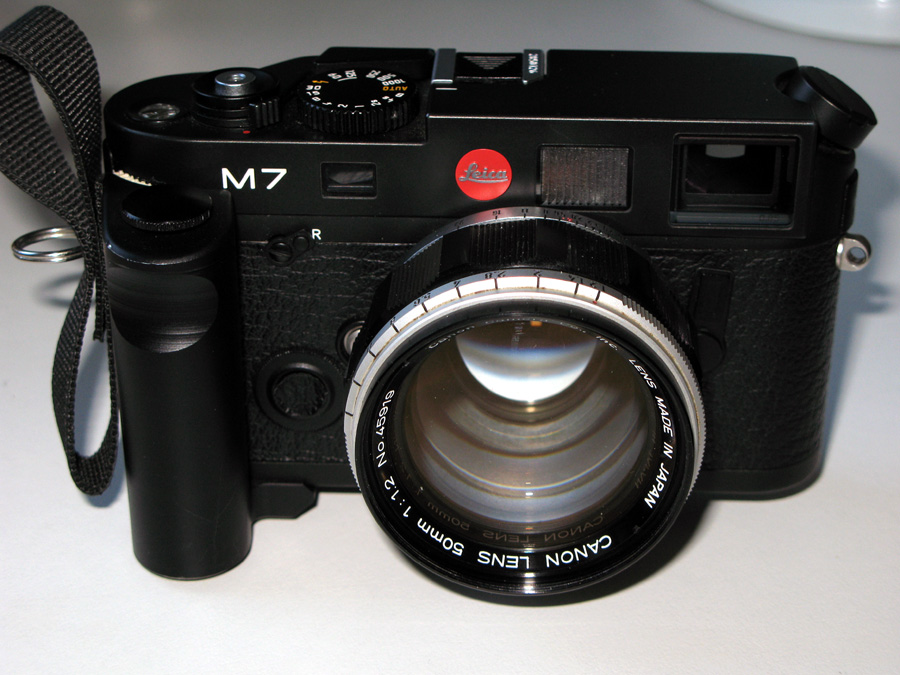
You’ll note that I do not list any of the digital M series cameras above. I started to part company with Leica when they brought out the unsatisfactory M8 and have yet to see them regain the mojo they had for much of the 20th Century. From that you may deduce that I am today anti-Leica. Hardly, since I still have my lovely IID, wear a wedding ring shaped like the scalloped focussing ring off a DR Summicron, have a dog called Oscar and a cat by the name of Barnack…
Make no mistake that Leica has an illustrious past, and one that I respect. After a hesitant start, Ernst Leitz GmbH listened to Oskar Barnack, funded his prototype, found their niche and worked it for all that it was worth. People moan today about the high price of Leica lenses and bodies and the limited number “special” editions (Lenny Kravitz and a fistful of wire wool anyone?) but the truth is that Leica was almost from the outset a rich man’s toy. The gold-plated, lizard-skinned Luxus I saw the light of day in 1929 and set the tone that is still followed today.
Saviour
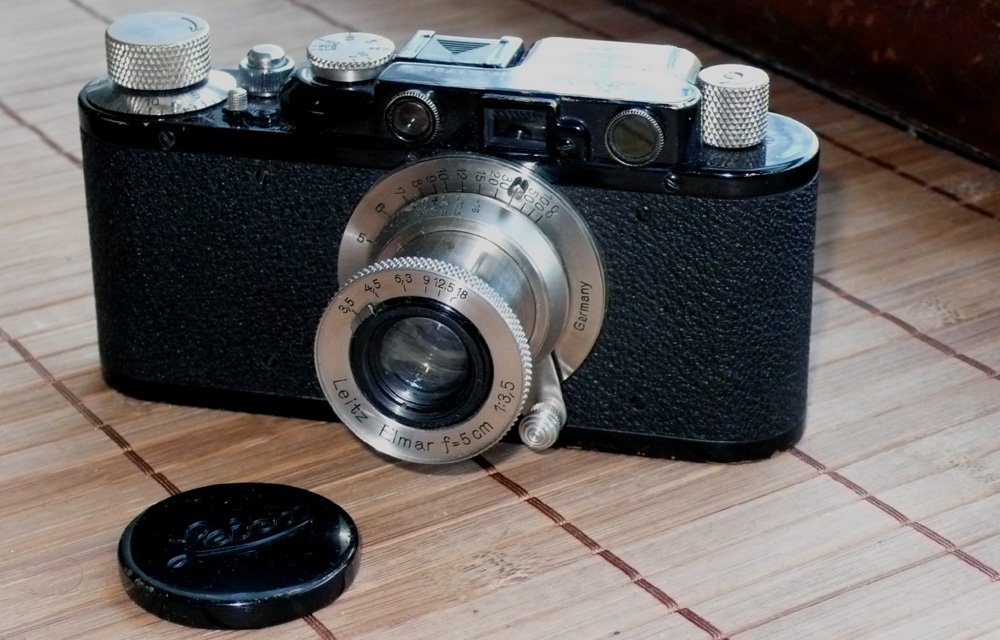
What saved Leica from being a short-lived luxury item was the happy coincidence that the cameras and lenses were just so damn good. Proper working photographers and photojournalists discovered that the little cameras being produced by Wetzlar were robust, reliable and accurate, able to survive in arduous conditions and deliver usable images where larger and more complicated cameras were either unsuitable or not up to the job.
Remember that at the time the Leica I first started to take off large format was still the norm. Medium format was regarded as small, and 35mm was referred to as “miniature”. “Real” photographers looked down their nose at the 35mm film format and toted Speed Graphics, Zeiss Ikons and others. Leitz (later Leica) kept its corporate nerve, championed the format and extracted every ounce of quality out of each negative.
It would be true to say that there was a confluence of influences that worked in Leica’s favour; the conflicts of the 20th century from the Spanish Civil War up to Vietnam and beyond saw photographers with small, reliable Leicas around their necks.

Iconic
They were used by iconic photographers such as Tim Page, Henri Cartier-Bresson, Don McCullin, Lee Miller, George Rodger, David Seymour, both Capas, Philip Jones-Griffiths, Alberto Korda—the list is endless—to produce iconic images, images of man’s inhumanity to man, in war, famine and poverty; images that changed the world. It’s no coincidence that there are many Magnum members in that list; the rise of the world’s most famous photo agency coincided with the crystallisation of the Leica mythos as the war correspondent’s choice and the documentary photojournalist’s favourite.
That hard-won aura of rugged competence and uncompromising quality fuelled Leica sales for decades to well-heeled amateurs living out their fantasies of bush jacket-clad fame.
What went wrong in my eyes?
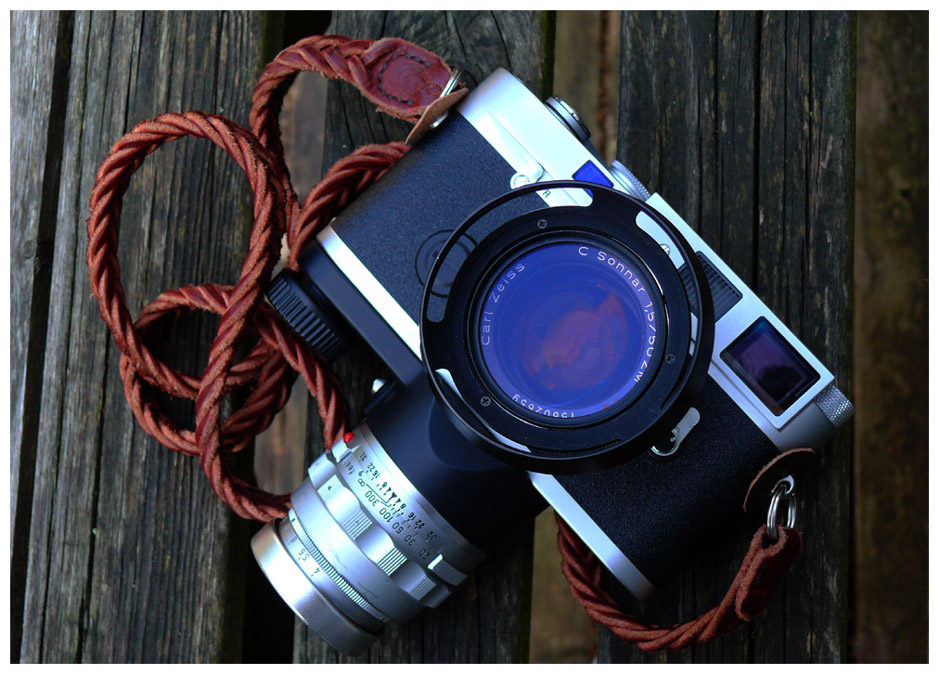
Clinging to film
In reality Leica clung for a little too long to the film format that had made their fortune. The meteoric rise of digital photography blindsided the Sages of Solms. They did not realise until it was almost too late that the immediacy and accessibility of digital trumped the quality that a Leica could still deliver on a frame of film.
Even when multiple outlets in many towns were offering 60-minute, 30-minute, even 20-minute developing turnaround AND burning the images on to disc, the writing was well and truly on the wall. Leica—with its highly priced, long-lived, beautifully hand-crafted lenses and film bodies—were brought to their knees by low resolution, grainy, moire-infested digital imagery.
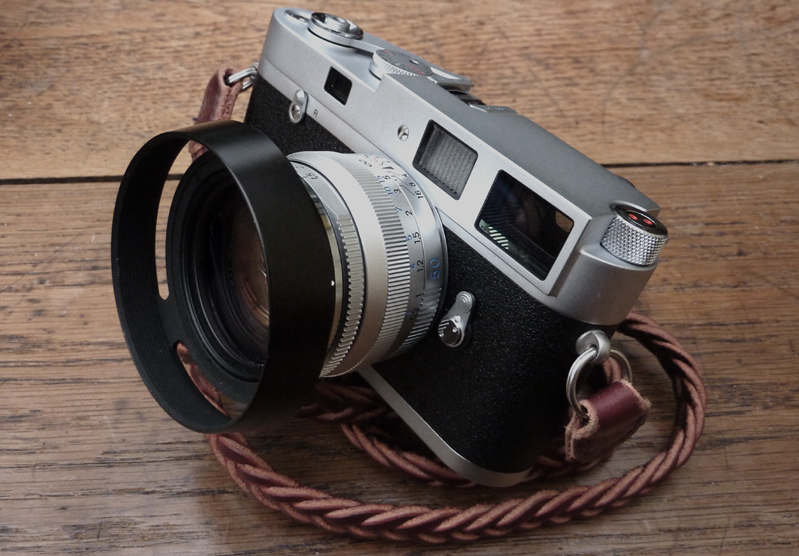
And it was only going to get worse as digital got better and rapidly closed the image quality delta. Then Epson of all people stuck in the most painful stiletto of all by bringing out a Leica-mount-compatible digital rangefinder camera—the R-D1—while Leica was still saying that a digital M could not be done with current technology.
Enter the M8
I can only imagine the horror that greeted Epson’s announcement in Solms. They knew that they had to do something, and fast. The result was the M8. There’s no doubt that it saved the company, by delivering the digital Leica that people had been clamouring for. But it was buggy, cludgy, poorly constructed of bin-end parts and resembled the svelte film Ms in the same way that Las Vegas Elvis, after many, many cheeseburgers, bore only a passing resemblance to Jailhouse Rock Elvis.
Things improved marginally with the M8.2 although that came with a wealth of challenges of its own (anyone for a coffee-stain…?) and it was only with the M9 that Leica really started to look like they had got the hang of digital. The current Leica M still suffers from that middle-age spread that makes it look like a fat bar of soap with ergonomics to match, but there’s no doubt that it is light years ahead of the woeful M8.
21st Century Leica
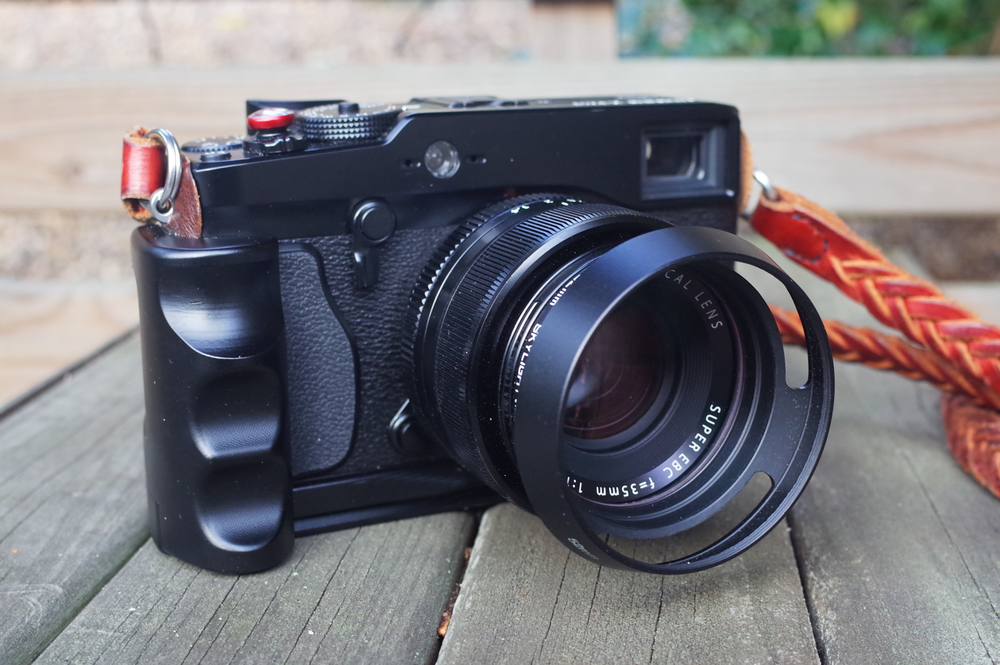
So why do I say that Fuji is the 21st Century Leica? What is it about the X Series that makes it so much better? It’s a combination of factors, some organisational, some technological and some related to what I shall for the moment refer to as “momentum”.
Let me explore five reasons that I believe explains where Leica have gone wrong and Fuji have gone right.
1. Fuji makes reliable cameras
Yes, I know Fuji has their moments—“orbs” in the X10, sticky aperture blades in the X100, even the recent configuration settings amnesia in the new X-Pro2—but they deal with their occasional wobbles openly, promptly, courteously and with the minimum of inconvenience to their user community.
Leica, on the other hand, seem to be unable to bring out a camera without something congenitally wrong that either shows up immediately or months or years down the line, after extensive “field beta testing” by their long-suffering owners, the findings from which are customarily met with silence and denial.
They do usually own up in the end, but only after a veritable shitstorm of complaints that makes the average Leica user feel both exhausted and disenfranchised. The PR disasters that accompany each problem simply serve to make matters worse. Remember the magenta problem with the original M8? That must have cost them a young fortune, as did the sensor swap out on the M8.2 and the coffee stain issue, not to mention the more recent sensor problem with the M9 and Monochrom.
It’s not that every Fuji is perfect—it is that they are fettled until they are, quickly and often via firmware, without making the owner feel like a pariah.
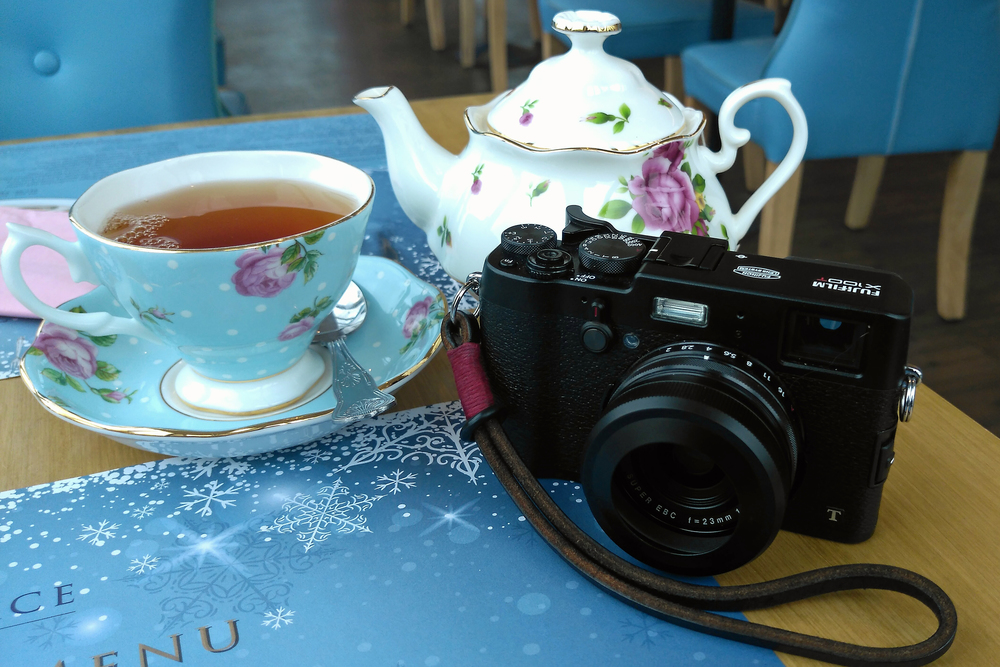
2. Fuji X don’t need no Visoflex
The Visoflex was a clever invention that allowed Leica M bodies (there was a predecessor screwmount version called “PLOOT”) to be adapted to take lenses longer than 135mm, by effectively turning them into SLRs (the Viso was effectively a right-angled viewfinder and a mirror box). Yes, I know that the current Leica M doesn’t need it either, but the current solution is inelegant to say the least.
Fuji on the other hand have a body and lens system that allows ALL their lenses to be used effectively on ALL their bodies without adaptors, clip on viewfinders, or any other form of kludge. One of the great strengths of the Fuji X system is that I can go out for the day with my X-Pro2 and slap on a tiny 27mm in the morning to shoot discreet street and then add a stonking great 100-400 zoom in the afternoon and take pot-shots at pigeons. One mount, one set of lenses, fully compatible throughout.
3. Fuji is priced for non-dentists
Now I am not picking on dentists per se, but they are renowned for their affection for the products of Wetzlar and their immunity to the relentless annual price hikes that have put Leica lenses and bodies out of the reach of normal mortals. The current Leica M is listed at £5250—that’s FIVE THOUSAND BIG ONES. Would you like a lens with that? A 50mm f/2.0 Apo-Summicron will set you back a further £5600 (Ed: This is an extreme example, there are plenty of new M lenses under £2,000 not to mention a vast arsenal of excellent secondhand gear] .
The X-Pro2 by comparison is £1,349. Add on the 35mm f/2.0 and you have to shell out a further £299. Now I am known, if I am known for anything, for the saying “buy cheap, buy twice” but the yawning chasm between the price and value of these two, equivalent body and lens combinations is simply indefensible.
Oh wait—there’s an elephant in the room. What’s that, I hear it trumpet? The M is full frame while the Fuji is a measly APS-C?
Remember that my contention is Fuji is the Leica of the 21st Century? In the 20th Century, when the Leica first saw the light of day, the 35mm format was the undersized underdog, sneered at by the cognoscenti and the “big boys”. Today the difference in real-world output between FF and APS-C is so small as to be negligible—making in turn any argument for superiority risible at best. Let me put it this way: The vast majority of dentists using their Leica Ms are going to get just as good a result snapping on their next city break as the rest of us mere mortals with our “lesser” format cameras.
By the way, did I mention that the Fuji combination is weatherproof too?
4. Fuji has brand clarity and a clear product identity
Back in the good old days there were Leica Rs (SLR) Leica Ms (Rangefinder) and— well that was about it. Two bodies, two lens ranges, simple and elegant (albeit largely incompatible with one another). Today the prospective Leica owner has to choose between the M, T, S, X and SL systems, the Q fixed lens bodies and the collaborations with Panasonic that result in the V-Lux and D-Lux.
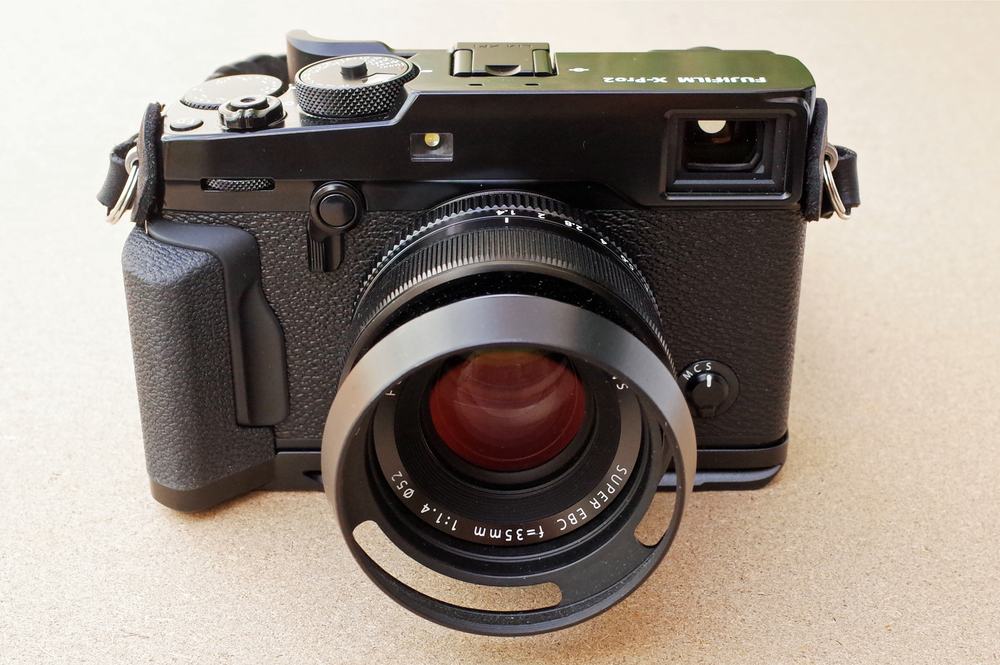
That’s a veritable plethora of bodies, glass, sensors, batteries, formats and options to confuse and confound even the most expert “Countdown” maven (note to Wetzlar, we need a vowel or two and the world will be our photographic Scrabble tournament). Fuji on the other hand offers us the X Series of which the (interchangeable-lens) X System is the core.
There are small-sensor compacts (X30) Premium, APS-C compacts (X100T) and the DSLR-style X-T1 and new flagship “rangefinder” X-Pro2. They have a high level of common design elements and cross-compatibility. You recognise a member of the X-family instantly because of its strong resemblance in appearance and handling to its siblings.
It comes across as a system that has a clear design ethos. Niches are catered for and filled, a bit like Mercedes cars—but from the top of the range to the bottom there is no mistaking them for what they are. Put a Leica T beside a Leica M and you would not know they came from the same planet let alone the same manufacturer. Keeping it simple simply works. Diversity is not always a survival trait.
5. Fuji gives a damn
This has nothing to do with technology, and everything to do with ethos. Leica gives off the air of a patriarchal, patrician company that does what it does and believes that—even in the age of social everything—a dignified silence is a good thing. As a result it appears out of reach, out of touch and out of time.
Fuji, through their active application of the philosophy of Kaisen, delivers the opposite. Their persona is one of a company dedicated to delivering an exceptional product that is the result of actively listening to and catering for a clearly defined user demographic. Neither Leica nor Fuji sets out to be all things to all men but Fuji is winning hearts and minds while Leica is straining credulity, patience and wallets.
Conversion
I am certain that many who have read thus far will write off this article as the rantings of a disillusioned ex-Leica owner who is behaving like a reformed smoker. They would deride the Fuji X system for being a pastiche, a poor-man’s Leica copy.
Yet nothing could be further from the truth. When I bought my first Fuji X—an X10—I had no intention whatsoever of swapping systems. I had three M bodies, an R7, a Digilux 2 and a D-Lux 4 as well as a IID. I had roughly 14 or 15 lenses that fitted the M, R and LTM bodies. I had a young fortune invested in Leica. But no faith in their then current product set or their future roadmap. Today, 90% of my Leicas have gone, “translated” into Fuji X. I have spent another young fortune along the way, money that would have flowed to Wetzlar if only they had got their act together.

Today, Leica looks old. Tired. Unsure where to turn next and unwilling to engage with their customer base. All the momentum is with the “young upstart” Fuji. They have finessed a retro-style, photographer-friendly premium compact-the original X100-into a strong, well-regarded system that is used by experienced photographers and newcomers alike -because it is something special.
The new boss
Consider in closing two recent items that appeared in the news. An interview with Tim Page, a man who was saved from certain death by the Leica he had at his eye when the F4 Phantom attacked the boat he was on in the Gulf of Tonkin. Today he uses an X-Pro.
Secondly, you know you have the room when one of your competitors uses your product to advertise their own-even inadvertently. Nikon’s recent faux pas not only went viral it even made it into the mainstream press-the sort of coverage that cannot be bought.
Yes, Fuji with it’s X series is the Leica of the new Millennium. Meet the new boss, not quite the same as the old boss. It’s got the product, the direction, the cachet, the mojo, the momentum, the looks and the brains. And, above all, it has captured the Zeitgeist in a way that only Leica used to be capable of.
- You can find more from Bill Palmer at Lightmancer
- Subscribe to Macfilos for free updates on articles as they are published. Read more here
- Want to make a comment on this article but having problems? Please read this

I only happened on this article and the long correspondence to-day, and it has been both enjoyable and – for my purposes – hugely profitable reading. So many thanks to everyone!
I don’t have (and don’t intend to have) an M. But Leica in other areas has been synonymous with beautiful imagery and minimal processing for me, starting with the D-Lux 4, embracing the Digilux 2, and finally the X Vario. As a jpeg shooter I was tempted to buy a Fuji X-T20 by all the praise heaped on its film simulations, not least acros. I took a side by side walk with the X-T20 and the X-Vario and found that I was just as satisfied OOC with the Leica as with the Fuji – also mono. Added to that, navigating the Fuji manual and controls has been for me as daunting as I imagine learning to fly a jumbo-jet would be, so it hasn’t had many outings and is likely to be offered to a new owner soon.
Well – I remember the article (3 years ago) since which time we have the M10, but we seem to have lost Bill – is he still shooting with Fuji?
I’m still shooting Leica, but as I type this there is a Lumix S1 with their 50 f1.4 sitting next to the computer . . .
Bill has a change of direction and has been developing an internet-based system to provide information and help for careers. I haven’t heard from him for a year or so but this has prompted me to contact him. As far as I know he is still with Fuji but I suspect he doesn’t now have much time for writing.
Do I detect a blossoming interest in the S1? I have to say I really like it, except for the old problem of weight.
I wanted a file Leica when I was younger but could never justify the cost. I settled on an Olympus OM system and happily used that until it was stolen. I replaced it with Nikons and still have an F3HP and a few lenses in the closet.
When digital became viable, I cycled through a few compacts and then a series of Nikon DSLRs. After waiting for the never realized digital Nikon FM, I stuck my toe into the Fuji ecosystem with an X100s. It is slow but acceptable and the image quality is surprisingly good. I added an XT-1 and found what I had been waiting for but that Nikon never delivered. Those and subsequent Fuji’s handle well, produce excellent images, and are light, compact, and easy on my aging back. I buy used or at upgrade cycles so resale value is not a concern.
Thanks Joseph. Good to have your experiences. This is a very old article so probably won’t get a lot of feedback now. Best wishes. Mike
Hear, hear! I too was an inveterate Leica shooter, from the iiif to the M9…..which is now gone. Fuji XPro2 has taken it’s place.
To use an analogy: it’s like the difference between a Harley-Davidson and a modern Japanese bike—the Harley’s loaded with cachet (and pricey) because of its past history—but it is smoked any day of the week by the Japanese bike…same with Fuji…and at a reasonable price, too….
First: I have given credit, and linked to this article more than once.
Second, I NEVER watch the Angry Photographer videos (because he is obviously lazy, and -if you dig- he is not a good photographer). However, this came up in my suggested watch feed:
https://www.youtube.com/watch?v=ZjyH-3O7jew
Looks like he is stooping to a new low. He has stolen your idea!
https://www.youtube.com/watch?v=ZjyH-3O7jew
Great article and pov.
I would compare the function and design of the Fuji’s more to Contax, actually.. the X-Pro’s being more like the Contax G2, and the X-T’s like the Contax RTS.
I think there are so something special with Leica M’s, despite their high costs and antiquated philosophy.. but I suppose one buys into Leica for the simplicity.. although you really can make any modern digital camera as simple to operate as you want if you really wanted to and don’t give in to making excuses why you can’t or why some other camera is better at it… A debate for another conversation…
I myself own an X-Pro2 and l I’ve it. It is the X-Pro I always wanted, but the X-Pro1 failed to fully deliver. However, I can’t deny I have an interest in owning at least 1 solid Leica M and lens some day. Not sure which. Digital will always depreciate ( except for the insanely expensive limited editions, perhaps), so a film M body seems classic, will hold its value better overall, film tech doesn’t change at this point, and a film M seems the most appropriate way to own and experience Leica.
That being said, I can’t deny the convenience of digital its advantages.. an M9’s ccd is unique, a modern M240 has the more refined speed and imaging power, and the new M10, that’s soon to be announced as of my writing, seems even more refined and taking some good steps back towards some of what made Leica’s charm or appeal and reintegrating into the latest M… e.g. even simpler controls, no video, thinner body, etc..
Don’t know if I will ever get there?.. could see myself continue to be very happy with my X-Pro2 and adding lenses to the collection for a lot less $$.
Fantastic article, Bill. For me, after over a decade of shooting a lot of professional motorsports with pro Canon gear, I was jaded, burned out spiritually and physically worn out, literally. When I bought my first Fuji X-cam, an X10 that I literally stumbled over from a display at Costco in Sept. 2012, my passion for photography was reignited. I took it with me on a landscape photography holiday to Arches Nat’l Park in Utah, along with my pro Canon gear. Needless to say, I found I much preferred the images from my little X10. After renting an X-Pro1 for a week shortly thereafter, I was a goner. There’s no doubt that the Canon pro gear does the job it was designed to do very, very well. But using these wonderful Fuji X-cameras have brought the joy back.
I think this is a great article, and I agree with a lot of your points sir.
I really love the direction Fuji is moving with their cameras, however there are two reasons, I would not buy into their system:
1) Although many reviewers describe the bokeh (produced by Fuji cameras/lenses) as "beautiful" and "creamy" – I find the bokeh to be downright nervous. I literally get a headache when looking at certain Fuji images.
2) Lack of IBIS (and OIS in most lenses). I need it.
I wanted to report that I am now eating my own words.
I had a chance to try an X-Pro 2, and the images are amazing. The spherical aberrations are a bit over-corrected, but the bokeh isn’t as nervous as some of the samples I’ve seen from reviewers. I’m wondering if that was a result of their post-processing?
The lack of IBIS was a non-issue for me as well. My hands shake a little, but I was able to get beautiful images with the Fuji, and the skin tones…amazing!
Hi Rick,
It IS that good, isn’t it? I think a lot of people over think and over process their Fuji image files. There’s a lot that comes straight out of the camera that’s usable. I also think it’s pointless to write a review and manhandle the images to a point that you are judging more about how clever the photograper is at post processing than actually seeing what the camera itself can do. You are right about the skin tones too – they are about the best I have found.
I think, that Fuji can create something like the Leica oft he new Millenium. But they forgot something. Leica has succeeded to create a mythos around this brand.
One oft he reasons of this mythos are the Leica magazine (LFI) and the M magazine. Fuji has the Fuji magazine, but this is something like a brochure to present their products.
I agree with you. I have photographed with Leica M since 1962 with a 35 mm lens. Have thought about buying a digital Leica M several times, but do think the digital M Leican is too bulky and also expensive. Then came the Fuji X100, and it felt like I was home again. A handy little M-similar camera with a 35mm lens.
Sincerely
Bengt Björkbom
I think the reason Leica is suffering an identity crisis is simple: the before the digital revolution M rangefinders were the pinnacle of compact system cameras. So they attracted both rich customers who were more interested in conspicuous consumption as well as actual professionals. With the advent of digital technology, a live viewing sensor has made it possible to produce mirrorless cameras that offer significantly advanced features in the same or smaller size bodies. I disagree with the premise that digital caught Leica off guard. Leica knew digital was coming, it just didn’t know how it was going to respond. Leica was at a disadvantage here. Not being a consumer electronics company and not being a large enough photographic concern to develop and manufacture its own digital sensor (an enormous undertaking), it knew it was not going to be able to break ground with new ideas and technologies the same way the original M did. So they tried a little bit of everything. They continued making film cameras (M7) and film bodies with digital shoehorned in (M8). They partnered with Panasonic, offering some glass technology in exchange for branding a few Panasonic compacts. They produced products like Leica T and Leica Q.
I don’t know how much of Leica’s revenue is generated by the M line, but keep in mind: today’s generation not only has never used a manual focus rangefinder camera, they may have never used a system camera at all. There is no fond nostalgia to fall back on. Leica can continue to refuse to evolve the M, at its own peril.
You raise an interesting point about young people and rangefinders. I am constantly amazed by the number of young people who are hooked on film and Leica rangefinder in particular. This is especially so in places like Hong Kong, Tokyo and even central London. So the rangefinder is anything but dead.
I was not aware that Leica was suffering an identity crisis, as far as I can make out it is going through one of its most successful and innovative periods, even for Leica.
Remember that Apart from making the first successful 35mm camera, the first successful rangefinder camera. The first successful ‘full frame’ digital rangefinder camera, they are making some very interesting EVF cameras, not forgetting the film enthusiasts by manufacturing and selling. no less than three variants, they are also increasing their sales.
This is like someone saying that if Britain were to leave the EU, they would be like Switzerland, to which someone like me would look all sad and say, er like the wealthiest per head in the world, with some of the most valuable companies… I.e. Rich and successful… Oh dear, how sad.
What would you consider innovative about the typ 240?
I have used Leicas all my life starting with the M3 and through to the trusty M6 and a M9……about 30 odd cameras..all Leicas..
Excellent article and I agree…this Fuji XPro2 is an fine camera but they do not have the time span of Leica to prove them selves…they are buggy..they are not a camera as more of a computer with lenses….I just want a camera ….the rest can be sent to the computer….This constant search for the ultimate camera that takes the ultimate and greatest photo is nonsense… what ever happened to the talent and passion of the photographer…seems like everyone out there is a photographer thanks to all the gimicky cameras that can make any crap photo a winner…and if you think looking at every photo on the screen every time you take a photo to check out lighting, history of the shot then you probably missed THE SHOT….of course these days with SD cards everyone one shoots 10, 20,30 hundreds of the same shot….
Film will probably fade off into the past…but what glorious years film has given us…Digital….what a load of rubbish…
Long term storage is not proven…my negatives and slide go back 55 years and still printable..Digital I seriously doubt it and what about HISTORY….will those images be around for future generations for study or exhibitions….???
But Fuji has an excellent selection of lenses and I do like like their gear…but I am not for jumping from a proven Camera, the Leica to a new Toy…..but I could be wrong we are living in the Disposable Age…. short term quality…
Skip Watkins
skipstills@gmail.com
“they do not have the time span of Leica to prove them selves…they are buggy.”
This is utterly erroneous. Here’s why:
Fujifilm has been making lenses since 1946 (that’s as long as Canon). They design optics for still cameras; some of the finest lenses for cinematography; manufacture fully 50% of all the world’s broadcast cameras (including the lenses for same); provide optical grade mirrors for satellites; and make the lenses for the Hasselblad HD-System (along with designing the camera bodies as well).
They have a long history of manufacturing some of the world’s most acclaimed medium format cameras.
Fujifilm is the only company in the world with decades of experience manufacturing cameras, optics … AND film. Their know-how with film has informed their choices with respect to the color filter arrays they use on their sensors.
Leica, meanwhile, has grown into a largely anachronistic company that makes baubles for wealthy fauxtographers and rich fashionistas.
You are absolutly right. I have a quite similiar story, using M and R Leica for nearly 30 years of professional work and changed then to 2 DSLRs and later a X-pro body.
The reason? Besides the inferior quality of overpriced digital "Leicas" like the Digilux 2, with the color peeling of after 3 weeks of use and a sudden death of the sensor after only 2 years, the main reasons were price and image quality. You are right when you say that Leicas never were cheap, but you forget to mention, that they nearly doubled their prices. While my last Leica M6 was worth the money, the M240 for me is definitly not, beeing lightyears behind even simple amateur-cams in terms of image qualitiy and color rendering.
Thats why the Xpro got more than a replacement for me. I find myself often when culling images to prefer the images of the Fuji. The x-Pro is rugged and professional, and the paint is not coming off. The Fuji glass is superb. It simply is a perfect tool for me to make good images.
Any further questions 😉
Yes robert, will you still feel the same when you get a job with someone other than Fuji? 🙂
Strange you should cite the Digilux 2 as an example of Leica misdoings. This little camera is still performing well and still commands a price around 50% of the new cost. It has a superb lens, unfortunately, as with all fixed-lens digitals, stuck with an old sensor. What all this shows, though, is that everyone has their own opinions. To some extent Leica and their customers operate in a parallel universe, for good or ill. I use Fuji and Leica and love both. I agree with your assessment of the X-Pro2. But it isn’t for everyone. I know friends who are great photographers and consider only Leica. I don’t think they are mad, just confident in their choice. Who is to say they are wrong?
I’m a Digilux 2 person as well. Of all my cameras, it is the one I most prefer to hold. And provided I remember to work within it’s admittedly stringent ISO limitations, I am completely satisfied – at least up to A4 – with its 5mp images.
I have both a Sony a7r and a x-pro1 and have contemplated upon what camera body feels right. I almost never dig into menues or features and most of the time use manual m-mounts on them. With that approach they handle very similar. So if you like the manual feeling just go with manual lenses and any body will do.
Great article. Love my X-T1, it’s almost a clone of my previous love….Contax RX. Same designer perhaps?
Thanks for your assistance, Jono
I’m old school myself and I find a simple dial much better. I must be hanging around with screw mounts too much! I never use pre-sets. I prefer to work on my ‘digital negatives’ in Lightroom and just to do basic exposure adjustments in the field and the rest afterwards.
Call me old-fashioned, if you wish, but it works for me.
Thanks
William
I’m old fashioned in this respect also. I have the direct compensation switched disabled (as Jono mentions) because I find I am constantly nudging the thumb wheel. But, if you wish, it is an option to have the thumbwheel live and I know many owners who prefer to use it like that. In general I agree with Jono that the current M is very well sorted on controls and menus.
Thanks Jono
I had no lock ups for two years until I did the latest Leica firmware update recently and now they have come back again! I will look to see how I can avoid having to press the button at the front in order to do exposure compensation. The Fuji and D-Lux method is much easier and more intuitive for me, however.
The Olympus models, handling-wise, look like the Lumix m 4/3rds models I have used for some years but with the Fuji exposure adjustment method added on the Pen F, at least. Handling is very important to me. I find most screw mounts and early film Ms to be very good in this regard but I believe that Leica has lost its handling ‘mojo’ in the digital era.
The solution might be a camera with the handling of the Fujifilm models, the size of the Olympus models and the rangefinder and lens quality of the Leica models, but we all know that will never happen. They are all good cameras in their various ways and we are lucky to have such choice at this time.
William
Exposure compensation
On the M
Set Menu – choose exposure compensation
press the down arrow then the right arrow to switch ‘Direct Adjustment’ on or off. Then it will work either way.
I think the current M firmware is extremely agile and effective – the Auto ISO options (with 1 or 2 times focal length) are, I think, better than on any other camera
Exposure compensation on the Olympus OMD cameras can be assigned to either dial, and is also direct, and the Olympus handling and menus is nothing like the Panasonic (believe me). . . . .
Personally I feel that the literal application of shutter speed / aperture / exposure compensation to specific dials with painted numbers is rather a backward step . . . . . fine on the (limited) M, but on a modern configurable camera it’s a bit of a conundrum . . I’m really keen on having user presets for different situations (Pentax understand this very well), But the trouble with the Fuji model is that if you have everything visibly set on the buttons and dials, then user presets must either ignore those values . . . or transgress them. Leica have taken this issue to the last ditch with the SL, where nothing but the On/Off switch has writing on it and user presets therefore don’t conflict with visible values . . . BUT they have a top LCD which quickly shows you all the camera settings without having to look around at different dials etc.
Fascinating functional and philosophical distinctions 🙂
Hi there Bill – I hope you’re well.
Excellent article, and I won’t defend Leica for fear of the "He would say that", But it seems to me that apart from the optical viewfinder of the Xpro2 (not a proper rangefinder of course) that Olympus have aced Fuji in every area except high ISO image quality:
Better lenses (and smaller, and cheaper)
Much faster autofocus
Totally convincing weather sealing and build quality
The difference in size between µ43 and APSc is less than the difference between APSc and full frame – we all know that all these modern cameras take great images.
So whilst your arguments of Fuji vs Leica are forceful, it seems to me that just as powerful arguments could be made for Olympus against Fuji . . Perhaps more powerfully.
Jonathan,
Funny you should mention Olympus and m43. But as Bill knows (and I think John Cartwright also) I have been dallying with Olympus over the past few weeks. My interest was quickened by the telephone conversation I had with you a couple of weeks ago. Since then we have been trying out the PEN-F and the OM-D E-M1 and I have to say I am immensely impressed, both by the cameras (especially the new PEN-F) and the system as a whole.
So on this day of the publication of Bill’s article I was to be found at my local Fuji dealer putting all my Fuji gear up for sale (essentially the XF lenses I have been holding on to). I shall be writing about this volte face in due course but it is appropriate to mention it here.
I have only the best regard for Fuji and I really enjoyed playing with the X-Pro2. It is a wonderful camera and makes the basis of a superb system. In my case, though, I see it as more first system than second system. Bill and many others are now dedicated APS-C users and, indeed, treat the crop-sensor has a fair substitute for full-frame. Yet the Fuji is nearer in size and weight (especially when the lenses are taken into account) to full-frame and I don’t find that much difference in terms of carry-ability.
What I needed in a second system is something that can be carried easily, packed easily when space is lacking: A true lightweight alternative. The m43 system offers this but also contrives to provide excellent results with the usual provisos on ISO and dynamic range. Perhaps a little of the Leica dust has been scattered over Olympus as well as Fuji.
Mike
Hi There Mike
Well, perhaps I was a little disingenuous, but there’s not much mileage in my defending Leica here, but like you, my µ43 system is a second system. For me, in most circumstances, I just prefer to shoot with a traditional rangefinder, and a Leica M is still the only option (and I think the M240 and it’s variants, in the current firmware version, is a well sorted and reliable system).
I hope you’re enjoying your M-D (jealous I am!)
Indeed. The M-D is quite wonderful (despite the alarum over the battery drain which I’ve already written about). There’s always something happens with a new Leica (but I don’t tell Bill). I am totally hooked on the M-D and haven’t cast a tear over selling my M-P. It’s so pure and great fun to boot. I’m hoping Leica will take it more mainstream when the next version of the M arrives–for the future it could well be the M that survives while all the electronic baublery goes into the SL Mark II or similar.
Jono, it’s grand to hear from you. I take your point about Olympus; I have a soft spot for the brand and I commented at length about the new Pen F back in January: https://www.macfilos.com/photo/2016/1/27/fuji-x-pro2-and-olympus-pen-f-premature-comparisons Now I know Mike has fallen for that lovely little PEN F, and as a second system as he intends to use it it has a lot going for it but that’s how I view it – an adjunct to a more capable system. That PEN F is the camera they should have produced some time ago and I’ll grant you it has a lot going for it but it is at heart a jpg shooter’s joy and I would argue that the only department they have clearly aced Fuji in is chromy shinyness… ;0) It’s not weatherproof, and it certainly doesn’t project the air of robustness of an X-Pro2. Above all the Fujinon lenses run from the admittedly enormous 100-400 down to the svelte 27mm and every lens fits and performs on every body without adaptors, visoflex, cludges or compromises. I thus have, in a single system, not only a wide range of capabilities but also a wide range of carrying options. I can stick the 27 on the X-E2 and carry it all day or I can mount the 100-400 on the XPro2 and go hunting wildlife. In short it is as bulky and heavy or as light and agile as the occasion demands, and I want to carry.
Fuji cameras handle the same, they behave the same, they produce similar files, they even take the same batteries…
But again, I’ll make the point, it’s the overall value proposition that Fuji is getting so right. Others – including Leica and Olympus – are strong in some areas but woefully weak in others. Fuji isn’t #1 on every measure but the overall "package" – strategy, system, sales, marketing, service, support – puts them ahead of the pack.
Hi There Bill
Well, I wasn’t really thinking about the Pen F (sweet though it is), but the OMD cameras and the pro zooms and excellent primes . . . But Hey – Steve Ashton has put it better than I can:
http://steveashtonphotography.co.uk/blog/
He’s been a long term Fuji User, and he explains why he has converted to Olympus
Oooer….missed that Steve Ashton piece. Manna from heaven it is as I sit down to write much the same thing…. Thanks.
Tried to follow up on this and got te message: “Account suspended”.
Where did you get this response from? The original article is still available and the comments are still open.
Bill
Thanks. Can’t disagree in financial terms (but then again Leica resale values are very probably better than Fuji). And also in reliability terms. My first M Monochrom died after 3 days. £5000+ quid and it died. Dead. Nothing.
Call me a stupid old fart for shelling out hard-earned ackers on such gear if you like (many have), but I’ve stuck with this marque. I think of it a bit like those folks who bought Ferraris when they were a bit flaky. They’re not now. I wonder if Leica is moving in that direction? Recent products seem better (SL – I have one, latest Ms also)
By the way, a few weeks ago I bought one of the first M-Ds in the UK. Now that’s just bonkers in logical terms! But it’s bloody LOVELY as an object, and to shoot with. Oh no, there’s that emotion again……
Cheers
John
You are exactly the kind of customer Leica wishes there were more of. Then they wouldn’t have had to partner with Panasonic and make all those cameras for the proletariat.
I have a foot in both camps but a bigger one in the Leica camp than in the Fuji one. I have 2 Fuji cameras and about 40 Leica ones dating from 1926 up to the present. That being said the top plate design and general handling of the Fujifilm X-Pro 2 are far nicer to use for users of traditional Leica cameras than those of the current M240/262 Leica cameras. The main things that the current generation of Leica M cameras have going for them are the rangefinder focus and the superior native (full frame if you wish) image quality by virtue of its sensor and its suitability for use with great Leica lenses. Yes, you can use them on Fujifilm cameras, but they work best in their native home.
The handling of the M240/262 cameras is ‘clunky’ and ‘cludgy’ at best. The absolute nadir is the exposure compensation method of pressing a button and turning a dial. The Fujifilm method which is used on the Leica D-Lux ( a Panasonic LX 100 in disguise) is vastly superior. You cannot see manually set speeds in the Leica viewfinder, just some arrows and dots; which was OK for the M6 but you could actually see the set speed in the earlier M5! The battery, buffer and lock up issues are not fixed despite several firmware updates. The digital Ms are choosy about what SD card you use which is inexcusable in the year 2016. My 1926 I Model A will take the same 35mm film as the current Leica M-A so why are the digital Ms so choosy about their ‘diet’. The EVF solution via a separate viewfinder is a disaster. I have one but have not used it for at least two years.
I was disappointed that Leica implemented the M-D, a camera I would like to love, by disabling a camera that already had a lot of handling issues. An opportunity to deal with those issues was missed, I believe. The handling of the X-Pro is a dream by comparison with that of any current Leica digital M. For those who are worried about all of the extra features and buttons, you don’t have to use them. They are only there in case you want to use them. I have the X-Pro 2 for about two and a half months now and I have not really read the manual. I apply the same philosophy to all new items whether they are microwave ovens or cars or cameras. I only find out how to use the bits I want to work and I ignore the rest.
So for the conclusion. I like both camera systems but the current generation of Leica digital rangefinders lags behind the Fuji system in the all important (to me anyway) handling department. Other systems which are thumbwheel and menu driven such as Canon, Nikon, Lumix (apart from the wonderful LX 100), Sony, Olympus etc,etc are by comparison just ‘computers with lenses’ in my book. Despite my criticism of Leica the handling of digital Ms is actually better than any of those systems.
My conclusion is that if Leica just borrow some of the handling and ergonomic traits from Fujifilm they will be right up where they belong, at the very top of the tree.
I have stayed away from the issue of price as it could be a distraction. The Fujifim X-Pro 2 does introduce some choice at least just as you can buy either a Ford or a Mercedes. At the end of the day, either choice effectively does the same thing.
William
Hi William
Whilst I rather sympathise with your points about seeing the shutter speed in the rangefinder in manual mode . . .
You don’t have to press a button to use exposure compensation (just enable direct adjustment) – you simply need to turn the dial. I’ve not had a lock up for two years, and neither have I had SD card issues . . . or battery issues . . you either need a firmware update . . or possibly you have a problem with your camera?
Best
Jonathan
“…and the superior native (full frame if you wish) image quality by virtue of its sensor…”
Sorry, William, but that’s rubbish. The X-Pro2 wipes the floor with the M240 sensor for IQ, DR, and high ISO performance. I mean absolutely annihilates the Leica.
For me, a lot of this is about heritage and breeding. Leica invented the format that most of us use today: 35mm full frame. Emotional crap, maybe; so be it. I have owned a LOT of Fuji X equipment. It’s all gone because it didn’t do it for me. And that’s a personal thing. But it’s bloody brilliant kit, that Fuji X stuff. Just not what I wanted.
In my opinion Leica optics are the best in the world. Very costly, but the best. I am lucky enough to own quite a few, including the pinnacle 50 Apo-Summicron. It’s unsurpassed, at least in my amateur experience of shooting.
I have the greatest respect for Fuji, and of course Bill and his writings here. But each to his or her own. And if you can afford it, buy what your heart wants. My heart has always wanted Leica. Any dalliance with other brands has been transitory. Judge that as emotional and illogical if you like. I don’t care. I’ve long since stopped bothering with other marques.
And don’t come to me for advice on your teeth; I’m not a dentist.
John, nice to see you contributing. I agree with you – it is about heritage, breeding and a whole lot of other "soft" factors. Of course Fuji has a notable heritage of their own – founded 1934 (Olympus 1919, Sony 1946, Ricoh 1936, Panasonic 1918. for the record). Leica didn’t invent the 35mm format; it was first patented in the 1900s and I think from memory the Tourist Multiple was the first viable camera that could be called 35mm. But ultimately it doesn’t matter. I used Leica for many years and still do, in the shape of my IID; but my point was that as Leica was to the 20th Century, so Fuji is to the 21st, and it’s not just about the products; it’s about the – to use a German term, "gestalt" – the entire user experience, from to configuration, from shutter release to image and from intent to service. Fuji walks a mile in the customer’s shoes then gives them back, polished with new laces where Leica relies upon gnomic – if not enigmatic – silence. When I walk around with my camera – of whatever marque or model – it’s Fujis I see being used by a wide cross section of people. The brand has a vibrance and currency that Leica lost when they suffered their existential crisis at the end of the film era.
You are right of course; to each their own; but even a loyalist such as yourself – and you know me well enough to know my track record with the brand – has to acknowledge that Leica has lost a lot of existing and potential customers – me included – through mishandled reliability issues, marketing disasters, muddled product direction and an overall lack of communication and attention to customers. That’s an awful lot of total addressable spend that has gone elsewhere…
“The brand has a vibrance and currency that Leica lost when they suffered their existential crisis at the end of the film era.”
Very well said. Though I would argue Leica lost their currency to the entire Japanese camera industry back in the early 1970s. For one thing, they completely ignored the importance of the SLR while clinging to the rangefinder — that was the first serious misstep. (And the Leica SL couldn’t hold a candle to the Nikon F2 and Canon F1 of the day.)
The second misstep was quickly abandoning autofocus as it was becoming popular in the late 1980s.
The third misstep, as you noted, was missing the importance of digital’s ascendency — and clinging to film — as other manufacturer’s embraced pixels over silver halide.
So in all cases you can see a similar pattern here: an inability to embrace technology, to a great degree driven by an industry that was becoming increasingly reliant on electronics technology — something the German’s don’t do all that well, but that the Japanese do better than anyone in the world.
Once cameras went digital, electronics became the entire backbone of not only the camera’s operation, but also of the very capture medium itself.
Meanwhile, Leica spun their anachronistic beliefs using words like “tradition” and “craftsmanship”. Where did that get them? Damn near into bankruptcy.
If it weren’t for their partnership with Panasonic, they wouldn’t have offerings like the Q and [modern] SL mirrorless cameras today.
Yeah, I get tired of the [old] hoity-toity argument about Leica superiority. That argument died out before Kodachrome…
“In my opinion Leica optics are the best in the world.”
You’re right, it’s an opinion. While I will concede that Leica makes uniformly excellent glass, there are many optics out there from other manufacturers that trump Leica, or that offer hall of fame glass that Leica doesn’t even have in its stable. Two such examples include:
Somewhat Bill….but unfortunately for Fuji they live in a world alongside Olympus (EM5, EM1 and Pen), Leica (Q, T and SL), Fuji itself (X100 series, Xt1, XE 1/2, XPro’s), Ricoh…..I’ve tried them all. The one thing Leica M has is the function of rangefinder focusing and minimal controls. Granted it’s just a type of focusing….they all make photo’s. But it strips back the whole electronic feel of the above mentioned AF mirrorless cameras. Fuji is one of many Bill.
Hi Andrew, I think, actually, you make my point. About the only thing Leica has these days is the rangefinder and the minimal controls; the optical playing field is largely levelled and reduced in overall significance by the sensor. You are right in that they all take photos, but it is how they do it that differentiates – the "UX", or User Experience – and in that Leica and Fuji play in a similar space. Would you rather have the under-invested Ricoh? The PlayStation-style Sony? The Micro Four Thirds Olympus? The soccer-mom Panasonics or the rapidly disengaging Samsung? What about the big boys – Nikon and Canon?
The point is that Fuji has effectively stolen the Emperor’s clothes by doing what they do – and doing it just that bit better. If I was drawing it as a Gartner quadrant, Leica would be in the top right box – but Fuji would be further to the right, and higher – in this Millennium.
Well I thought Fuji had actually differentiated themselves and that is why I purchased an X Pro 2 a week ago. I’d used the Leica Q a few weeks earlier to see what I thought. They are very similar bar the interchangeable lens system of Fuji. Both fun to use, both leading technology in small packages, both "real" cameras. But both very similar. The XPro 2 is another "good" camera though I don’t think it has really distinguished itself enough…particularly once you start using it. I personally don’t feel it’s a classic which drew me in to the point I must keep it.
I’ll be returning it tomorrow and be taking out my Mamiya 7 or M6….Maybe Zeiss might bring out a new digital rangefinder?
>Maybe Zeiss might bring out a new digital rangefinder?
Interesting but unlikely. The development of a digital body is a significant undertaking. If Cosina had any experience building digital bodies that might have been something to explore, but not only do they not, they’re getting out of the film game too.
http://www.imaging-resource.com/news/2015/10/01/cosina-announces-its-killing-off-the-last-of-voigtlaenders-35mm-bessa-range
I hear Cosina built the Epson RD-1 but the line ended there.
Thanks for this, Mike. This is actually a very old post so probably won’t get much feedback. It’s a pity, though, that the RD-1 didn’t continue.
The first time I ever got my hands on a Leica, I was around 12 years old… A "wealthy" friend of my father, a bank manager 🙂 (well in those days, that was status) had an M3… I never got to use it, but I marvelled at the way it felt, looked and it reeked of quality.
He, however, was hugely disappointed, which was why he lent it to my father… He preferred his newly acquired Fujica, which had a built in light meter and was smaller.
It didn’t stop me, and although I have owned a few Fuji cameras, and the Leica M8… I still yen for more Leica…
Cameras, are not the be all and end all in my life, I do not spend any kind of fortune (young, old or middle-aged), but to me even with all their niggles and faults, there is a look that no other camera/lens combination seems to get, regardless of my skill or lack thereof.
Add the simplicity of the operating systems, particularly of the digital cameras, something that Fuji has absolutely no idea about, albeit, even so being more than Sony, and you still have the incomparable Leica!
2d.
Stephen J.
Stephen, good to hear from you. I understand and appreciate much of what you are saying but I’d have to take issue with you about the Fuji operating systems by which I think you mean the menu structure. I’d entirely agree with you about Sony, but in terms of intuitive usability and clarity I’d actually rate Ricoh highest, followed by Fuji’s most recent (X-Pro2) menu structure.
Ho Bill, thanks for your reply… I note that you take issue with my comments regarding OS… Fuji are clearly aware of my point since they introduced the "quick menu", so now there are two menu systems… I found that setting a customised program on my X100s was nigh on impossible to work through and it wasn’t clear which of the menu’s were sovereign.
Now that you mention it, I found the mu system on the Ricoh Grrrr even worse, and the little buttons and my fat hands were not made for each other, so much so that one of them had to go after less than 3 months.
The worst (for me though) was the Sony RX100, it was very highly rated and I made some good pics, but I never got past using it as a P&S, nothing made any sense.
But having said that, the overall point that I was making, was not really critical of any system… I was merely pointing out that I really like the heft and the simplicity of Leica cameras… The film cameras being really simple and now, even though the M 240/9/8 were succinct, to say the least, the new D variation is as simple as the film cameras.
But mainly I was pointing out that this very subject…
"Which is better?"
… Leica or Fujica, was being discussed way back in 1968 too… There is nothing new under the sun.
So for me, in order to capture a leicaness, I still leica to use the Leica, despite the outlandish expense.
Hello,
In my opinion the actual box has very little to do with the quality of the final image. Much more important are the lens and nowadays, the software. I recently sent in my M9 for another sensor replacement. It’s going to take weeks, months. And only if they accept that my camera has corrosion issues and they replace the sensor FOC will I ever use it again.
In the meantime I have five outstanding Leica lenses which I do not want to part with and want to use. Enter the X-Pro 2. I have to honest, I was so p… off with the problems I was having with the M9 that I had basically given up on photography. I had not really taken any interest in the vastly evolving digital camera world, but by chance, just a few days before taking in my M9 I came across a review of the X-Pro 2… it looked interesting, so I did a bit more research and quickly found out that I could use it to host my Leica lenses. And so, after spending a few hours playing about with one in a shop in Brussels (I live in Belgium), I bought one. It felt like coming home, not only to the M9 but also (due to the wonderful ISO switch placement) to my beloved FM2.
I believe I now have a great combination of a fantastic body (meaning the camera body, not mine), and Leica lenses… so I am getting leicaness from a non Leica system and without the expense.
I think the menu system is clear and well thought out. The sensor self-cleaning feature is a godsend after the terrible dust gathering pit that is the M9 (could have been designed by Dyson, it’s that good at collecting dust !).
I will probably get rid of the M9 if I ever get it back.